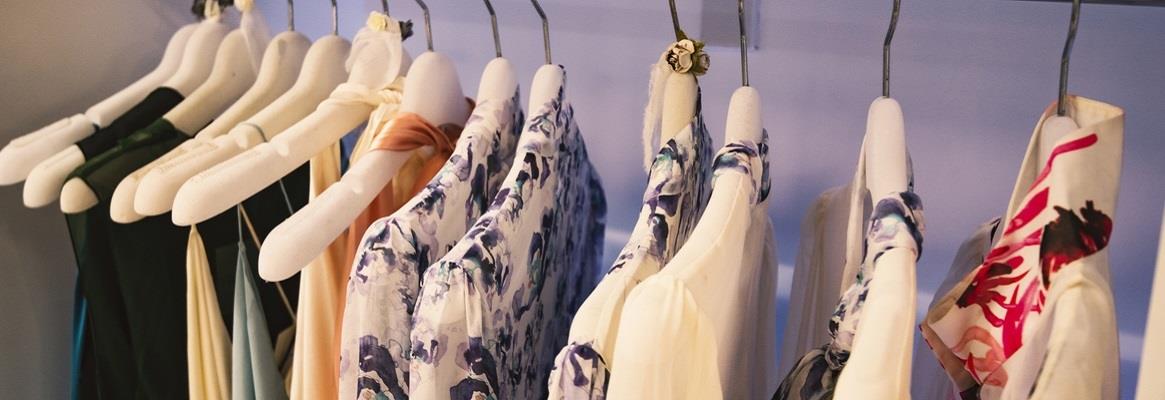A brand’s perspective on sourcing and supply chain strategy in facing covid-19 challenges.
The late 19th century saw the birth of brands and retailers such as Harrods (1849), Levi´s (1853), Macy´s (1858), Lanvin (1889) or Chanel (1910). But retail hasn´t changed much since then.

When I started working in the fashion industry 20 years ago, companies were organised according to a seasonal and “stable” calendar. Retail companies’ operations and their networks (brands, suppliers, distribution) were based on a linear and sequential supply chain model. The retail calendar was very basic—meaning that there was a full-price sales season and a sales period. Furthermore, in some countries, government regulations restricted promotions or special marketing campaigns. As a result, the product lifecycle curve that goes from introduction, growth, maturity and decline phases had a predictable pattern. In case of overstocking due to an unexpected change in demand, companies leveraged distribution channels to get rid of excess stock. The most illustrative examples are outlets stores.
Trade liberalisation started in the 1970s and China’s accession to the World Trade Organization (WTO) in 2001 boosted global trade. Since then, many companies moved their production to offshore countries, extending their supply chain and management complexity. Longer lead-times connected to a make-to-stock strategy wasn’t perceived as a risky business. A stable demand pattern, high gross margin (revenues: cost of goods sold–COGS) and a global retail footprint was a formula for business success.
Therefore, western firms began offshoring to China, Vietnam, Bangladesh, Sri Lanka or India looking to reduce labour costs and shaping lower cost structures to compete in a global economy. If US and European mainstream brands moved their production to Asia, luxury players differentiation strategy led them to manufacture in Europe while investing in vertical integration to ensure quality and supply of materials.
The Roots of New Retail
Retail supply chains did dramatically change in the past decade. Today, in retail, its not only about the “what” (the product) but about the “how” (the product / customer journey and experience). Its not a sequential approach but a configuration, like a Rubik’s cube. Digital customers, Millennials and Gen Z, are changing the world of retail; so, the traditional marketing funnel is dead. The customer journey is not any more linear, but continuous and dynamic. Customer touchpoints have grown exponentially empowered by digitalisation while smartphones give access to the largest store ever and the long tail economy.

The consumer-product connection changed, and customers want to know the story of a product, not only from a front-end (e.g. marketing) but also back-end (e.g. supply chain) perspective. Customer expectations have changed and societies too: the economy, politics, healthcare, lifestyle, climate, technology. The latest news shows how unpredictable and volatile events are in a world that is hyperlinked and globalised. Brexit, terrorism, Trump, hurricanes or social riots are a few examples.
The economic impact and implications for businesses during the covid-19 period are difficult to predict. From retaining talent to managing inventories, sourcing and financial costs, uncertainty is the new normal. Supply chains need to adapt to the current conditions, being a key business asset in the omnichannel era. The traditional model mentioned should orchestrate other business options such as make-to-order, customisations, renting, capsules, and so on. Its a customer-centric approach that requires a responsive and demand-driven supply chain.
Supply Chain Adaption to Uncertainty
Coronavirus, another unforecastable event, is accelerating many trends previously mentioned and boosting e-commerce sales. Retailers are struggling to face uncertainty and sales plummeted during the lockdown. Many retailers cancelled orders from Asian factories while defining a short-term strategy to face uncertainty, overstocking and negative cashflows. A business that is based on inventory turns and cashflow is king, and needs a fast and flexible structure. Today, the coronavirus is impacting and challenging each phase in the value chain, from design to retailing.
A business strategy to overcome covid-19 could be focusing on product freshness to increase inventory turnover and shorten the working capital cycle. From a design perspective, it means increasing the rate of production, launching more products more often. European fashion retailers and brands are redefining their supply chain and sourcing strategies to adapt to the new situation. A few decades ago, Benetton’s postponement and Zara (Inditex) fast fashion strategies already faced seasonality, a type of uncertainty, by developing competitive advantages. Today, there is a higher level of uncertainty. It�s a new normal business scenario.
So, what is the impact of such transformation in supply chains?
As Zara did many years ago, supply chains are aligning product assortment lifecycles to manufacturing locations. In other words, segmenting supply chains according to nearshore or offshore outsourcing. Speed to market requires shorter lead times, easy communications and the possibility of ordering small batches of clothing. Therefore, brands and retailers in Europe are relocating their trendiest items, due to the increasing complexity of forecasting, to close-to-home locations. Also, offshore markets experience economic growth and rising labour costs. Note, China is already the world’s top patent filer and that the US had been leading the ranking for the last 40 years. Manufacturing is gradually returning to Europe and the US when technology is accelerating the competitive advantages of near-shore outsourcing. Another important trend that impacts on nearshoring is sustainability and how companies are investing on transparency and traceability.

Pic: Inditex
Luxury houses like Gucci or Herm�s acquired some of their suppliers to ensure supply of merino wool, crocodile or python. Paraffection is a subsidiary of Chanel, established to preserve and promote the heritage, craft and manufacturing skills of fashion artisan workshops. Since 2015, Paraffection has acquired more than 12 workshops. In luxury, the value of country of origin (“Made in”) is very important and firms are increasing their investments to “secure” their value proposition, from protecting their intellectual property to ensuring quality control (e.g. raw materials, processes).
Limited editions or capsules could be an effective solution when facing speed-to-market and product freshness requirements. Companies, no matter their customer segmentation, are moving into brand collaborations like Fendi x Fila, Gucci x The North Face or Puma x Nintendo.
Slow Fashion as Strategy
Slow fashion, aside from the eco-friendly trend, is a merchandise strategy that bets on basics, timeless garments. Classical brands tend to offer timeless, neutral designs that are not impacted by fashion uncertainty (e.g. new colours, styles). The assortment characteristics enables these companies to have a more accurate demand. Therefore, manufacturing offshore is not that risky from a lead-time, high-volume perspective, but brands still need to ensure quality controls across the supply chain while embracing sustainability.
A fashion group that fits this description is Tendam (brands include Cortefiel, Pedro del Hierro, amongst others). Its current CEO, Jaume Miquel, said: “We firmly believe that Tendam is extremely well-positioned to lead the sector into the future, which will be shaped by five key trends: exponential growth in online business, more responsible consumers, fashion which is more timeless but offers greater added value, the need to integrate sustainability into every facet of our lives, and companies taking a more active role in contributing to a better society.”
If designer collabs are a type of collaboration between companies to promote brand and increase sales, other types of partnership are emerging. Tendam is transforming its retail approach with regard to product freshness and inventory turnover. Starting this autumn, Tendam will incorporate Levi�s and Bestseller brands into their e-commerce offering and in some selected stores. H&M is also experimenting with selling external brands. Its latest boutique in Berlin�s Mitte district includes external, local brands that have a special meaning for the potential, segmented customers in the neighborhood.
But this is not black or white, offshore or nearshore. Retailers and brands should manage their merchandise mix balancing “fast and slow business strategies” based on uncertainty risks and margins. A supply chain must evolve into an orchestra director, dealing with product lifecycles, lead times and sourcing locations but also by diversifying revenue streams (e.g. product and retail collaborations like Tendam and Levi’s; creating dark stores to optimise last-mile delivery).
Another important point is that China has exceeded the US and became the largest apparel market. Luxury spending by Chinese shoppers now represents 33 per cent of the global market. Bain expects Chinese consumers to make 50 per cent of their luxury purchases in China in 2025, up from 23 per cent in 2015. The repatriation of spending will continue in the coming years. Does it make sense, from a supply chain perspective, to manufacture in Asia, ship to distributions centres in Europe and then ship back to stores in Asia? Today, many retailers like Inditex (Zara) are using a centralised logistics system.
Supply chains need to be dynamic, flexible and responsive to volatile scenarios, including changes in shopping behaviour and a paradigm shift in the global economy (China is already leading the global economy), enhancing traceability, transparency and sustainability across the value chain and the omnichannel customer journey.
Bibliography:
https://www.voguebusiness.com/consumers/luxury-retail-footprint-shift-china
http://kreakoncept.net/daily-digest/china-to-become-the-worlds-largest-apparel-market-in-2019
https://www.bain.com/insights/whats-powering-chinas-market-for-luxury-goods/
https://www.tendam.es/en/2020/06/25/tendams-annual-result/tendam.es/en/2020/06/25/tendams-annual-result/









Comments